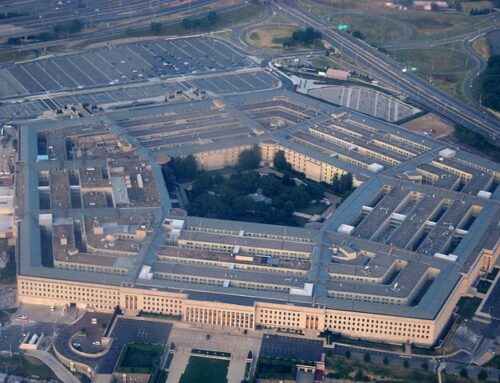A look at the nuclear weapons budget in the omnibus reveals that while Congress is keeping nuke funding on a short leash, a controversial project is getting a big bump in its allowance. The 2009 Energy and Water appropriations act—one of nine spending bills now lurching toward the President’s desk—contains $6.3 billion for the “weapons activities” function of the National Nuclear Security Agency, which is responsible for the care and feeding of our nation’s nuclear arsenal. That’s right in line with the $6.3 billion NNSA got in 2008 and $6.4 billion in 2006 (Congress decided to stick with 2006 levels in the 2007 budget).
Yet a controversial and confusingly named construction project at Los Alamos National Laboratory scored a quiet victory. The Chemistry and Metallurgy Research Replacement (CMRR) Facility received $97 million, $23 million more than it received in 2008 and $43 million more than in 2006/7. This is surprising considering the retirement of Pete Domenici (R-NM), who almost singlehandedly kept the project alive despite repeated elimination by the House of Representatives. But as the tables of omnibus earmarks show, Domenici left behind more than one parting gift. The omnibus report lists him as the sponsor of two earmarks worth $1.5 million, one for a nonprofit business development center that partners with Los Alamos and another for historic preservation of Manhattan Project sites at the lab. Rep. David Hobson (R-OH), another recently departed lawmaker, also added four earmarks worth $10.5 million to the nuclear weapons budget for Ohio projects including a laser-technology laboratory at Ohio State University and a supercomputing platform at a Springfield technology consortium.
NNSA proposed the two-building CMRR project years ago to replace the 1952 building that currently conducts research and produces materials used in production of pits for nuclear warheads. NNSA’s original plans for CMRR included facilities to produce the Reliable Replacement Warhead (RRW), which would replace existing nuclear warheads that some worry have aged beyond their usefulness. Congress repeatedly refused to fund the program because independent scientists found that our existing warheads are perfectly fine for now.
The Obama budget released last week drove the final nail in RRW’s coffin, stating that development work on RRW will “cease.” This sentiment is evident in the omnibus, which cuts more than $400 million for pit manufacturing. Though the death of RRW would appear to eliminate the need for the second CMRR building, NNSA says both buildings are still needed for research. But several members of Congress remain skeptical, particularly since a federal safety board said the facility is vulnerable to damage from earthquake—and the project’s price has exploded from $500 million to $2.6 billion. NNSA’s track record of cost overruns and schedule delays on construction projects continues unabated, as a Government Accountability Office report released this week demonstrates.
Questions about the fate of the CMRR and the nuclear complex will be debated at a House Appropriations Energy and Water Subcommittee hearing on the future of the nation’s nuclear complex next Tuesday.











Get Social